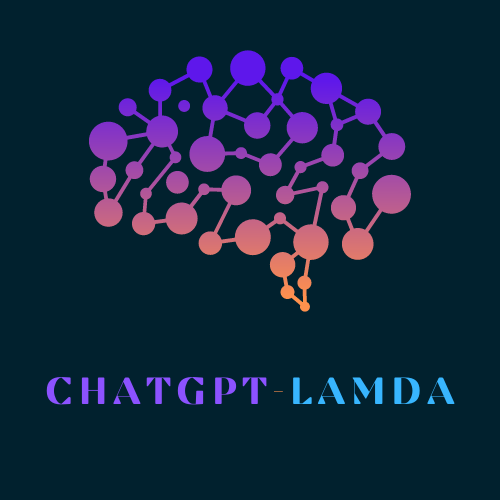Palantir's Role in Disaster Management
Palantir's software assists in managing disasters by helping officials make rapid, data-driven decisions. Platforms like Gotham and Foundry use analytics to improve emergency management by integrating data from various sources, reducing response time and increasing accuracy.
These tools provide a clear operational view during emergencies by combining data into a single, accessible format. This integration allows teams to efficiently:
- Track logistics
- Manage resources
- Plan evacuations
During events like hurricanes or disease outbreaks, Palantir's AI capabilities support scenarios such as tracking illness spread. Through collaboration with agencies like the CDC, the platform enables swift data analysis for effective public health responses, including mapping pandemic hot spots and predicting virus spread.
For disaster-related logistics, Palantir's data processing enhances supply chain management. Emergency teams can visualize supply routes and anticipate disruptions, ensuring resources reach affected areas efficiently.
Palantir's systems maintain data privacy while enabling agency cooperation through purpose-based access controls and audit trails. This approach prevents breaches while promoting collaboration among authorized personnel.
The platform's real-time data processing allows teams to adjust plans quickly as new information emerges, crucial in rapidly changing situations like floods or wildfires. By integrating various data sets, Palantir's tools help emergency responders stay ahead of evolving crises.

Project Axiom and State Department Collaboration
Palantir's partnership with the U.S. Department of State's Bureau of Medical Services through Project Axiom demonstrates the potential of data-driven decision-making in crisis scenarios. The project aims to enhance the State Department's ability to protect and support its diplomatic community through effective data management.
Axiom centralizes information and facilitates cross-agency collaboration, offering a comprehensive operational picture that improves readiness and response capabilities. The platform integrates diverse data sets, creating an environment for rapid analysis and intelligence-driven decision-making.
Key features of Project Axiom:
- Supports various operational workflows
- Streamlines decision-making process
- Provides necessary data insights
- Integrates with Palantir's AI features
This collaboration represents a shift in how government agencies can use technology to improve operational effectiveness, enhancing the safety and readiness of diplomatic personnel worldwide.
"We're honored to bring Palantir's proven software to the State Department to better understand and proactively manage operations that help protect these individuals and their families abroad," said Akash Jain, President, Palantir USG.

AI and Machine Learning in Crisis Situations
Palantir's integration of AI and machine learning into its platforms enhances crisis management capabilities. These technologies improve the speed and accuracy of decision-making processes during disaster response efforts.
AI-driven analytics enable responders to process vast amounts of data quickly, identifying patterns and trends that might otherwise go unnoticed. During natural disasters, Palantir's AI can assess and predict impacts by analyzing historical data and real-time information, helping teams prioritize resource allocation.
Machine learning streamlines operations across various sectors by combining real-world telemetry, satellite imagery, and other dynamic data. For example, during wildfires, AI tools can synthesize multiple data sources to predict fire spread, assisting in strategic evacuation planning and resource deployment.
The platforms also support ongoing evaluation of crisis response efficiency. Machine learning models assess past actions, identifying successful strategies and areas for improvement, ensuring that approaches evolve over time.
Palantir's AI emphasis on stakeholder collaboration enables real-time communication and data sharing across agencies, harmonizing efforts through unified command. This connectivity is crucial when managing large-scale crises that affect multiple jurisdictions.
In public health initiatives, machine learning algorithms accelerate:
- Identification of new case clusters
- Optimization of vaccine distribution
- Forecasting of transmission trajectories during health crises

Partnerships Enhancing Disaster Response
Strategic partnerships with industry leaders like Amazon Web Services (AWS) and Microsoft have expanded Palantir's impact in disaster management. These collaborations enhance data processing, storage capabilities, and AI integration.
The AWS partnership improves Palantir's ability to process and analyze data quickly, enabling efficient decision-making during time-sensitive situations. It also provides a secure infrastructure for handling classified information, ensuring sensitive operations benefit from enhanced AI analytics while maintaining data security.
Microsoft's collaboration integrates Azure OpenAI models into Palantir's Foundry and Gotham platforms, providing expanded AI and machine learning functions crucial for planning and executing disaster response operations. This partnership brings significant value to U.S. defense and intelligence communities, offering adaptable solutions that adjust to changing ground realities.
Benefits of these partnerships:
- Improved data processing and analysis speed
- Enhanced security for sensitive information
- Expanded AI and machine learning capabilities
- Adaptable solutions for changing situations
These alliances demonstrate a shared commitment to empowering agencies with technology that connects vast data landscapes to actionable insights. By combining resources and technical expertise, these collaborations drive innovations that are reshaping disaster response strategies worldwide.

Public Health Infrastructure and Palantir
Palantir's renewed partnership with the Centers for Disease Control and Prevention (CDC) strengthens public health infrastructure for effective disease surveillance and outbreak response. This collaboration equips the CDC with a strong digital framework to address public health challenges proactively.
Palantir's software forms the foundation for key CDC initiatives, integrating solutions like HHS Protect and the DCIPHER Program. These tools create a unified environment where critical health data can be shared efficiently among federal agencies, health departments, and private sector partners.
The platform centralizes diverse data streams, enabling public health officials to gain real-time insights into disease spread, identify potential outbreaks, and act quickly. Palantir's Foundry platform allows CDC officials to perform complex data integration and analysis, ensuring data-informed public health responses.
Key capabilities of Palantir's public health infrastructure:
- Predictive analytics for outbreak forecasting
- Genomics-specific data analysis for pathogen tracking
- Efficient distribution of medical countermeasures
- Enhanced capacity for essential public health functions
This partnership signifies a shift in how data is used to improve health outcomes, strengthening the nation's healthcare readiness and preparedness for both current and future public health challenges.
"Palantir is extremely proud to continue its partnership with the CDC, ASPR, and HHS to strengthen America's public health infrastructure through leading-edge preparedness technology," said Hirsh Jain, head of public health, federal at Palantir.
Palantir's technology serves as a crucial tool in disaster management, enhancing the preparedness and response capabilities of various agencies. By integrating data-driven solutions, it helps transform chaotic situations into manageable scenarios, improving outcomes for communities facing crises.
-
1. Karp A. Palantir Technologies CEO. Statement on AI revolution.
2. Palantir Technologies. Project Axiom: Data management platform for U.S. Department of State. Press release.
3. Palantir Technologies, Microsoft. Partnership expansion for AI and data analytics capabilities. Joint press release.
4. Centers for Disease Control and Prevention, Palantir Technologies. Renewal of partnership for public health infrastructure modernization. Joint announcement.




